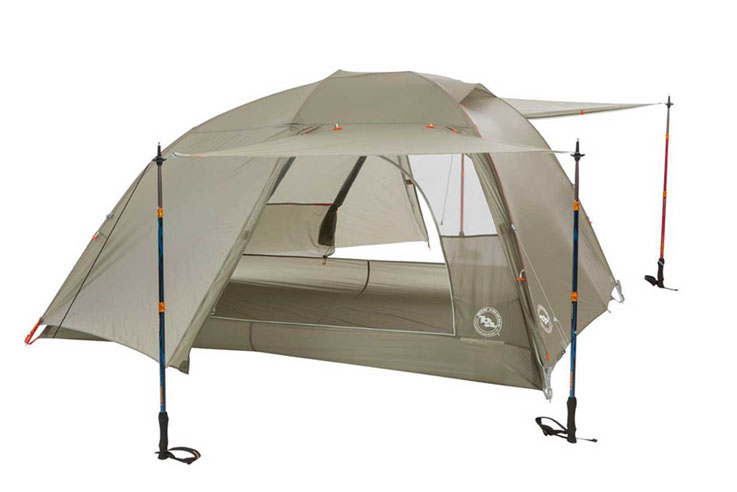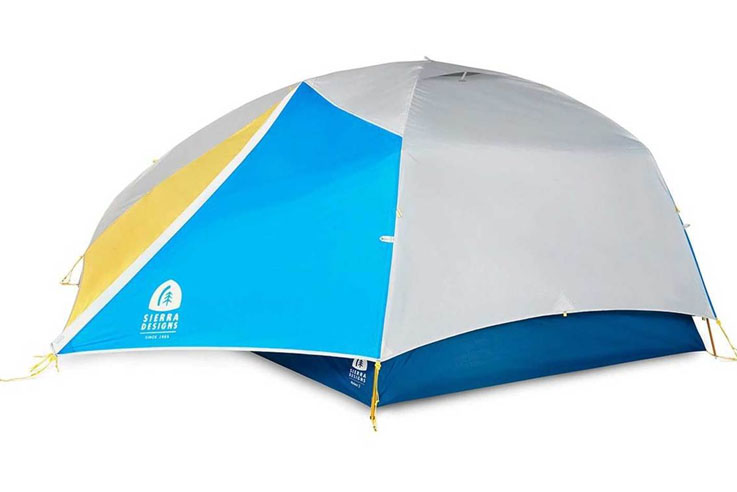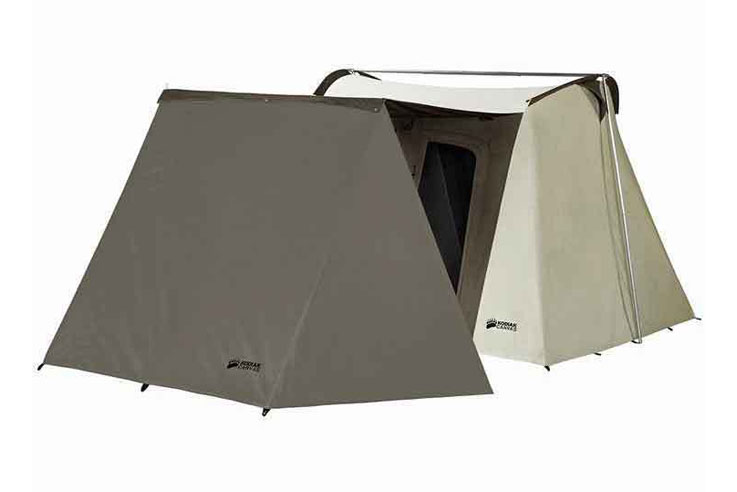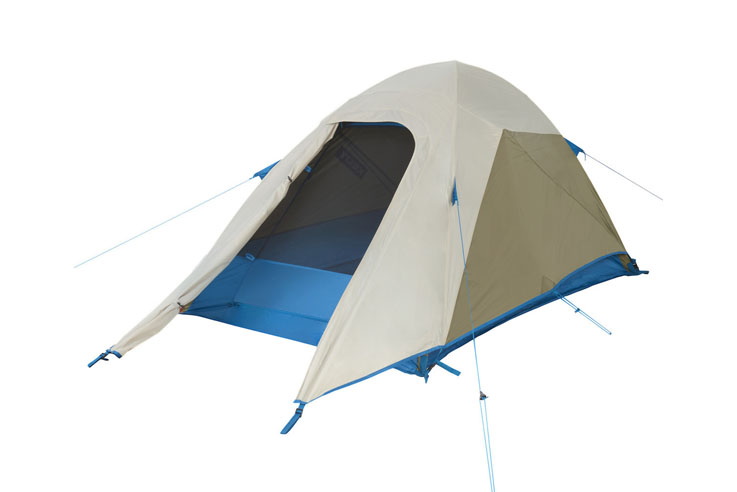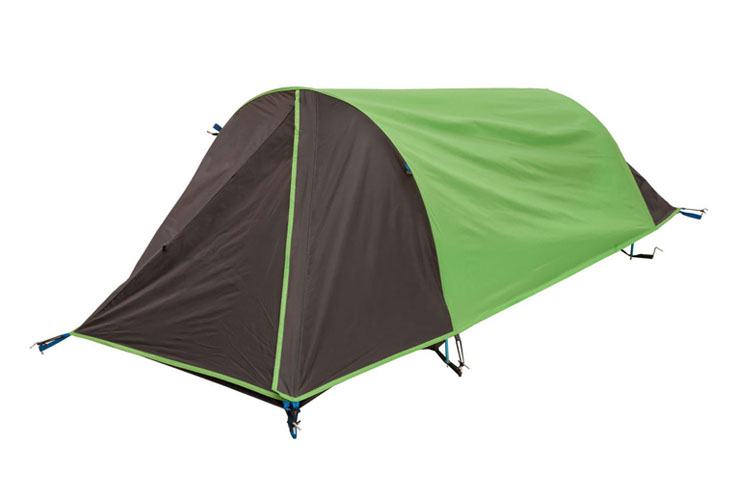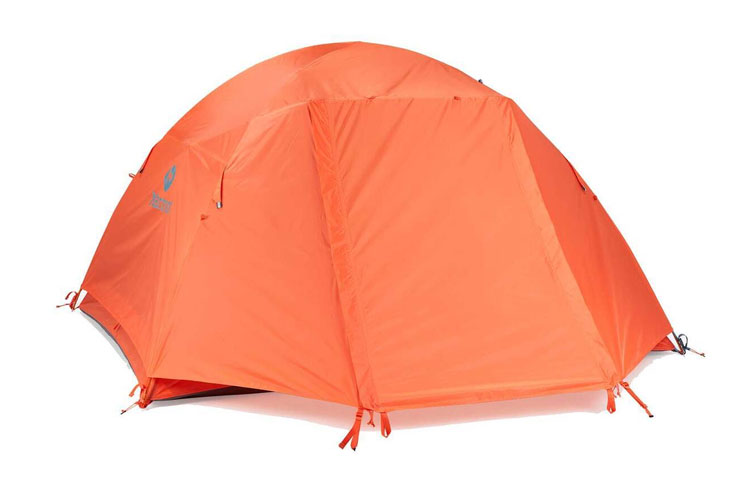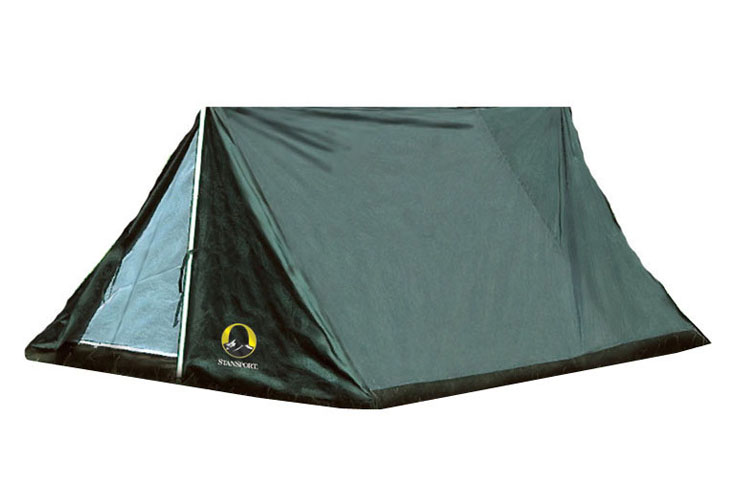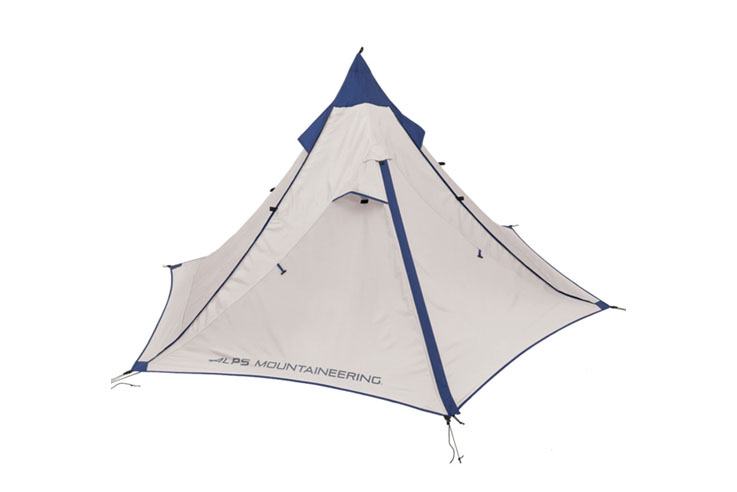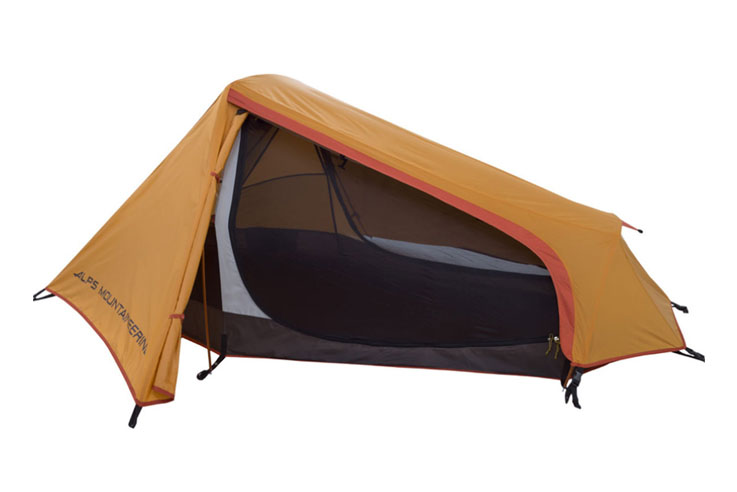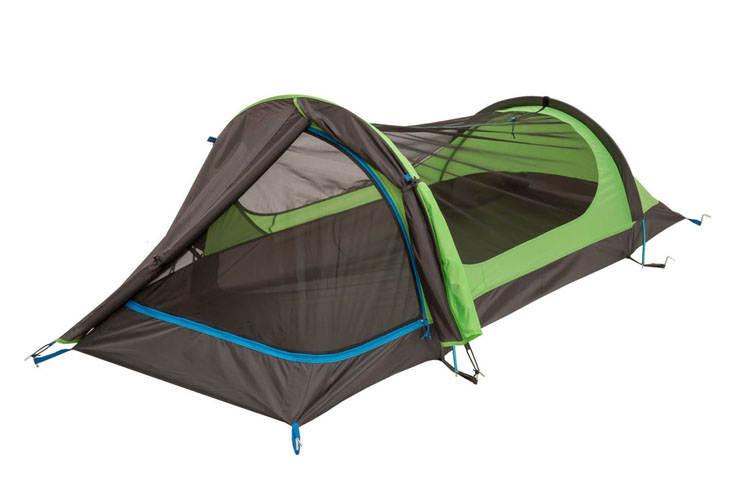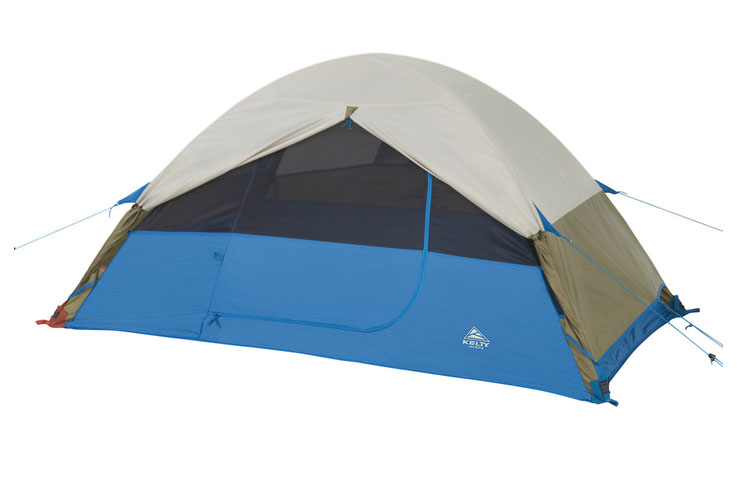How to Choose a
Backpacking Tent for Hiking
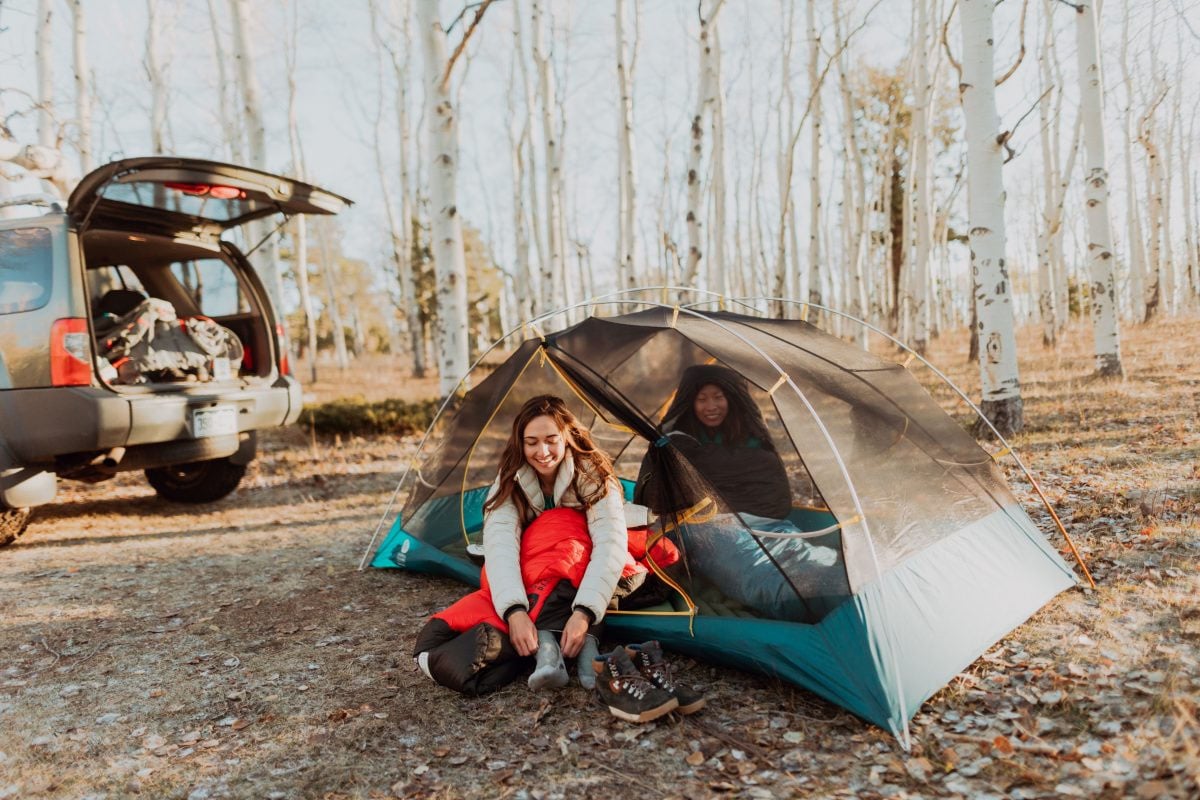
When you’re going to be carrying all of your belongings through the backcountry, every ounce is important. There’re tons of specialty gear for backpackers, offering every camping essential at the lightest weight possible. For family camping, a big tent is often the heaviest thing at the campsite. Although as a hiker, we can not afford to carry a 20 or 30 pound tent on our backs all day.
Your tent is one of the most important pieces of hiking gear you will buy. Without a good night’s sleep, you won’t have a good day of hiking, no matter how lightweight your gear might be. There are quite a few things to think about before you buy your hiking tent though.
The first step is to make sure you know how you will be using the tent, and what your priorities are. The rest is a little more technical, but we are here to walk you through it step by step. By the time we are done, you will know exactly which tent is best for you!
Table of Contents
Hiking Tent Capacity
The first thing you are going to see on the tent packaging is how many people it is rated for. This is its sleeping capacity. Most of the time hikers will have their own tents, especially if you are hiking in a group, so a one person tent is a frequent sight. However, it is not uncommon to have two people in a hiking tent. If you do not plan on having anyone else in your tent, then you can go with a one person tent to save on weight. Although if you think you might have someone in your tent on occasion, then a smaller two person tent will do the trick and will give you a bit of extra room when you are by yourself.
Most of the time, hikers are fixated on having the lightest gear available while sacrificing as little comfortability as possible. However, if you value comfort over weight reduction, you can get a smaller three person tent (very roomy for one or two people) that is still under four pounds like the Big Agnes Copper Spur HV UL3.
There are also some tent models that offer a little extra space without being able to fit an entire additional person. These are often marked “plus” and may offer just a little more space. Of course, the larger capacity tents have more material and are therefore bulkier and heavier than their smaller counterparts. Make sure the tent you choose aligns with your priorities.
Hiking Tent Seasonality
Seasonality is a tricky topic if you have never heard of it. Unlike the name suggests, a four season tent is not the best option in all four seasons. Instead, seasonality represents how harsh of conditions a tent can withstand. Most tents on the market are three season tents, with four season tents also being quite common.
Three season tents are ideal for camping in the spring, summer, and fall. They are breathable thanks to their mesh panels, reasonably waterproof, and a fairly good option for just about all kinds of camping.
If you want to camp in the winter or an especially chilly fall, then a four season tent will be the best option for staying warm. These tents are almost always double wall tents whose first layer focuses on warmth, while the second layer focuses on weather proofing.
If you are looking for a tent that can withstand slightly harsher weather conditions, an extended-season backpacking tent might be right for you. This can also be labeled as 3-4 season or 3+ season tents. These tents are meant for early spring through late fall, when you might expect to see some snow either because of the season or because you’ll be hiking high elevations. They have more poles than 3-season tents for added strength against winds, and they have fabric panels that can cover the mesh areas to keep warmth in and snow out.
In the end, a three season tent will do the trick for most hikers. If you want your tent to be as versatile as possible, get a three season tent with a detachable rainfly. This way it can still have good airflow during the summer, and you can stay warm a little longer in the late fall when you add the rainfly on.
Single Vs Double Wall Tents
Single wall tents, as the name suggests, only have a single layer between you and the elements. This layer is usually made up of multiple types of materials and is usually waterproof. Although these tents still need to be somewhat breathable so extended exposure to rain will beat a single wall tent eventually.
To give single wall tents a good amount of ventilation, they will commonly have mesh panels on the top of the tent, covered by overhanging material just like the walls. This allows for a bit of airflow and still keeps water out. This design also helps with condensation.
Single Wall
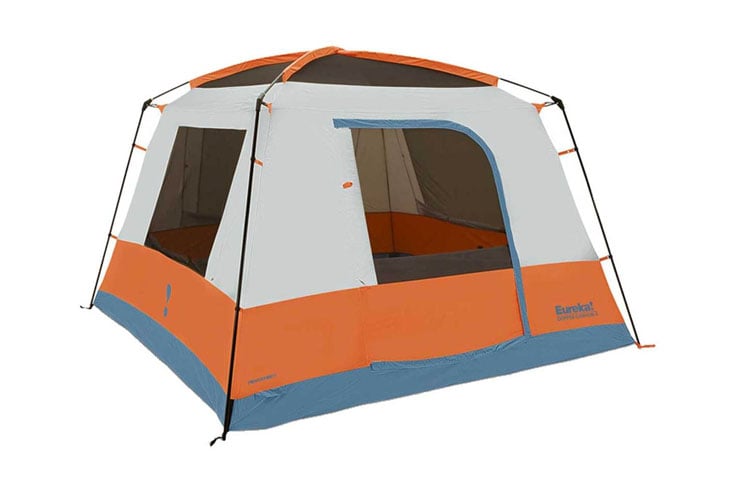
Double Wall
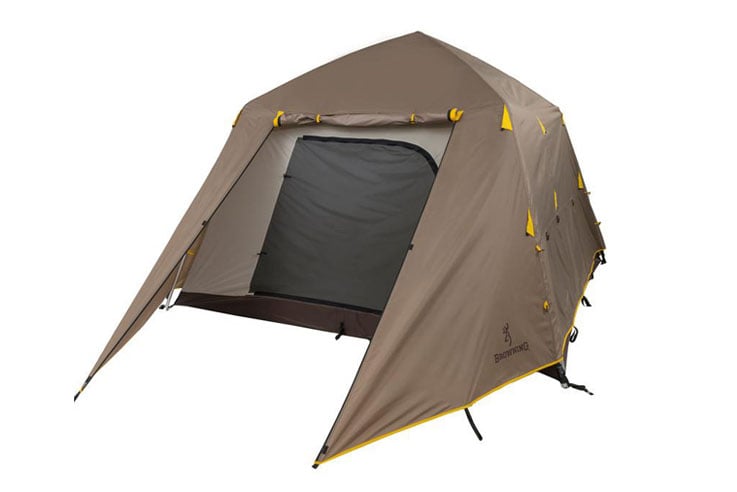
Single wall tents are good for drier climates where you do not expect to get a huge amount of rain, but still want to be protected from a medium size shower. Single wall tents are also lighter than double wall tents simply due to the fact that there is less material. For that reason, single wall tents are fairly popular for summer hikers looking to save on pack weight.
Double wall tents, obviously, have two walls. The inner wall is made for keeping you warm and making the tent breathable. The outer wall (also called a rainfly) is made to be 100% waterproof. When you put this tent up correctly, there will be an air gap in between the two layers that circulates air. This keeps you warmer and helps remove any condensation that accumulates on the rainfly.
Instead of trying to do both of these tasks in the same layer and compromising, with a double wall tent, you get two layers that are exceptionally good at their jobs. Of course, the added rainfly adds weight, but it is well worth it in many hikers' opinions.
All About Rainflys
As I mentioned before, a rainfly is an outer layer that is designed to keep water and wind out. Sometimes your rainfly will come sewn onto your tent and is not removable. This is the case for many of your typical three season tents, but oftentimes the rainfly is not big enough to withstand heavy storms.
Other tents come with detachable rainflys that you can take on and off. Most of the time these rainflys come with mesh tents that are extremely breathable. The rainfly is the most important layer and is the strongest line of defense against harsh weather.
Rainflys are not always necessary, so having a detachable rainfly is often beneficial. On the other hand, tents with attached rainflys are more simple to set up, and you will not get wet during a surprise shower.
To properly set up a rainfly, you will attach it to the top of your tent and stretch it out as far and as symmetrical as possible. This will make sure that water has a clear path off of it. You also want to leave a bit of space between the body of your tent and the rainfly. That layer of air in between will keep your tent warmer and dryer. Just make sure you still have some ventilation so that your tent is still breathable.
On another note, adding an additional rainfly on top of an existing rainfly is not necessary. Unless you are adding a rainfly to a double wall tent with an exceptionally small rainfly to get better coverage, you should never stack two rainflys on top of each other. This is going to make your tent much less breathable and will not benefit you much in terms of weather resistance. Think of it as putting an umbrella on top of your umbrella, doesn’t make much sense does it?
Freestanding vs Non-Freestanding Hiking Tents
A freestanding design means your tent can stand without stakes or guy lines. Stakes are often required to keep it from blowing away, but the tent itself will stand on its own due to its pole structure. These tents are often easier to set up than non-freestanding tents, and easy to reposition. Freestanding tents are extremely popular and most tents you come across will have a freestanding design.
Non-freestanding tents are tents that require one or only a few poles (called trekking poles) to be set up, and they mostly rely on guy lines to hold their shape. Thanks to this fact, they are often much lighter than freestanding tents because the added weight of the large number of poles is removed from the equation.
Plenty of weight-fixated hikers claim that non-freestanding is the way to go, and they have a good point. However, these tents are much harder to put up than their freestanding counterparts. You will certainly want to practice at home before heading to the trail.
Pole Selection
Speaking of poles, if you want a good hiking tent, you should pay attention to what type of poles it comes with. I am of course referring to freestanding tent poles. Your tent poles can be made of many different types of materials, but here are a few of the most common ones.
- Fiberglass: These poles are cheap, and easy to replace, but they are easy to break and broken fiberglass can be fairly harmful to your skin.
- Steel: Steel poles are very strong, and still cheap, although they will add a bit of weight to your pack and they can corrode over time.
- Aluminum: They have a very high strength to weight ratio and look nice. Most small tents will come with these types of poles. While they are strong for their weight, they can still bend fairly easily.
- Carbon: Carbon tent poles are the strongest tent poles out there, they are also very light and flexible. Unfortunately, they are also the most expensive.
Hiking Tent Design Options
You certainly want a tent that is easy to use. Although if you are focused on weight reduction, you may have to sacrifice some ease of use. The freestanding vs non-freestanding debate is a classic example of that. If you go with a freestanding tent, there are a few more options to think about when it comes to ease of use or quality of life. The better the design the easier it is to use, so let’s take a look at a few important design options you should consider before buying.
Number of Doors
For hikers, normally one door is all you are going to need. Although with larger tents, more doors make it easier for people to get in and out without stepping over each other. You can save weight by having just one door, since each wall with a door is typically heavier than one without.
Vestibules
Your tent may also come with vestibules where you can store gear. A vestibule is an area just outside of your tent, commonly in front of the door, or along the side of the tent , that your rainfly extends over. This gives you a bit more space to store your gear without having to keep it inside your tent. A vestibule outside your door can also let you keep your door more open and help with ventilation.
On larger tents, a vestibule acts almost like a garage and is a large place to store gear, or to sit while under the cover of your rainfly. Smaller tents will most likely have smaller vestibules.
Tent Shape
Tents of course come in all shapes and sizes. There is not one tent shape that is leaps and bounds better than the others. Tent shape is more of a creative choice. The one thing about tent shape to pay attention to is how the walls are angled. A tipi style tent will have less room inside due to its wall curvature than a dome style tent of the same square footage. So, if you want the maximum amount of livable space inside your tent, go for a tent with vertical walls.
Here are a few of the most common styles of tents for hiking and what you can expect from each.
- Dome: This is your typical tent style. The term “dome” comes from the way that the poles intersect at the peak of the tent. Usually this will be four poles (one from each corner) coming together at a single intersection point on the top of the tent. Dome tents have a square or rectangular floor, and nearly vertical walls.
- Tube / Tunnel: Tunnel tents are very common among hikers. These tents are longer and more like a “tunnel” than a square. They are a little lower than dome tents, and require the use of guy lines. The actual sleeping space is very efficient, and you will often see a door vestibule on these kinds of tents to store gear. This design is fairly light weight, hence its popularity in the hiking community.
- Geodesic: Geodesic tents make more of a semi-circle or hemispherical shape. They look much like dome tents, but are a bit more rounded. Their poles also intersect at multiple points, which makes this tent much stronger with the same amount of material. Normally this design is used in very large tents to support the extra weight, or tents made for harsh conditions to better fight against wind.
- A-Frame: If you decide to go with a freestanding tent, an a-frame tent will likely be what you get. These tents are pitched in a triangular fashion, and the front of the tent will look like an A. These tents usually have five poles, two on each side to make the A and one along the top to support the fabric.
Footprint or No Footprint
If you ever see a tent brand talking about their “fast-pitch weight” they are referring to the time it takes to set up the footprint, poles, and rainfly without the tent itself. Obviously this is not a very helpful metric, because we need the tent! The footprint itself is the floor of the tent. Most of the time the footprint is attached to the tent and does not come off. Although you can get tents that come with a detachable footprint.
You can then choose to set up your tent with or without the floor. This makes for a faster setup time, and saves weight in your pack if you don’t have to carry the footprint with you. Although this leaves you sleeping completely on the ground except for your sleeping bag and pad, and it also allows for water to flow under your tent quite easily. So the only time you should ever consider going without a footprint is when you know for sure that you are going to have a dry hike.
Tent Color
Something you may not think about when picking out a tent is the color! A brightly colored rainfly will make the interior of your tent brighter, which often makes it feel larger and more pleasant. Although getting a brightly colored exterior is also good when you are camping because it will make it easier for other people to see your tent, especially hunters. It is sort of like wearing a blaze orange vest while hunting, it keeps everyone safer. Of course, if you are camping on a campground, you don’t need to worry about hunters.
Hiking Tent Weight & Pack Size
As with all backpacking gear, weight is an important consideration. You want to keep weight as low as you can to make room for other essentials and keep yourself from wearing out too quickly. Although you still want a tent that has all of the qualities that you need. Weight and quality of life factors are inversely proportional in tents.
Ultralight tents can be very sturdy without the use of heavy fabrics. These do come at a higher price. Generally, an ultralight tent is a tent that weighs less than one pound per person. Make sure you check the actual specifications of the tent before you buy, because any brand can write “ultralight” on their packaging.
The minimum trail weight refers to the weight of the tent body, rainfly, and poles. These are the absolute minimum you need to carry in order to pitch your tent. This number does not include other things that may come with your tent like the footprint, stakes and guy lines along with your stuff sack. You can compare this number across tents – just be aware when you’re picking a tent that trail weight does not include the stakes or footprint.
The packaged weight refers to everything you get when you purchase the tent. This number reflects the tent body, rainfly, poles, stakes, sacks, instructions, and anything else you walk out of the store with. This is probably a little more than you will actually need to pack for backpacking.
The packed size tells you how much space the tent takes up. You may be able to get creative here by splitting up some of the tent items between two packs (if you hike with a partner), and leaving the tent storage bag behind.
In general, you want a light tent when you are hiking. Ultralight tents are less than one pound per person, and we would not suggest hiking with anything more than four pounds per person.
Material Choice & Durability
What your tent is made out of will also help with weight, and determine how durable it is. Most hiking tents are double wall tents, so you will need to look at the inner wall and the rainfly. You will commonly find tents made of cotton canvas, nylon, polyester, polyurethane, and even a few proprietary fabrics, but when you want to know how strong it is, look at its denier and thread count.
Durability is measured by denier. Denier is technically a measure of weight and tensile strength in fiber, so a higher denier fiber is better. How the fiber is woven will also impact strength. Some lower denier fiber materials are woven better than high denier fibers, and the resulting material is stronger than the higher denier material.
So, to keep up with this, you will often see a thread count beside the denier stat. Something like a 10D 300T tent has fiber with 10 units of denier and 300 threads in a given area. In general, it is best to go with a higher denier fiber and a high thread count. Although the price also goes up with those numbers.
Overall Tent Size
There are many factors that make your tent a comfortable place for you to rest. The tent size can certainly be an important factor. Even though you are probably not going backpacking to spend a lot of time in your tent, you never know when you will need to wait out a storm inside it.
There are a few numbers that can help you compare tent sizes. The floor dimensions will tell you how wide and long the floor of your tent is, and the floor area refers to its total square footage. You may have different preferences about how your tent is laid out.
The peak height tells you how tall the tent is at its highest point. This won’t be the same as the headroom in the tent, as most have a dome shape. In most hiking tents, the peak height will be much less than what you can stand up in. These tents are usually low profile and made to sleep, not stand in.
The wall shape will determine how much space you have inside your tent. Less space means less weight, which can be great, but it may also leave you feeling cramped. The more angled your tent’s walls are toward the top, the less space you will have inside.
A Few of Our Favorite Hiking Tents
Now that we have talked about everything you need to know to pick out a tent, it is time to put your new-found knowledge to the test. We picked out some of our favorite hiking tents that we know you are going to love. Let's start with a single person tent and work our way up.
Eureka Solitaire AL 1-Person Backpacking Tent
The Eureka Solitaire AL is a three season one person tent that is perfect for hiking. It weighs just 3.2 pounds and comes with a bright green rainfly. This is a tunnel design with aluminum poles, and is 96 inches (8 foot) long and 32 inches wide at the top. It tapers down to 28 inches wide on the foot end. It is made of 68D 185T polyester taffeta, with 40D polyester no-see-um mesh so it will be very durable over the years.
Kelty Ashcroft 2-Person Backpacking Tent
The Kelty Ashcroft 2 is a three season tent that sleeps two people. This is a perfect choice if you are hiking with a partner, or if you want a little more room when hiking alone. It weighs 4.875 pounds so it is on the lighter side for a two person tent. This is a double layer dome tent that comes with an olive green rainfly made of 68D polyester and also has aluminum poles. You will get 8.76 square feet of space in this tent, and will stay dry, with a roomy sleeping arrangement!
Big Agnes Copper Spur HV UL3
The Big Agnes Copper Spur HV UL3 is a smaller three person tent that is extremely roomy for one or two people. It weighs just 3.875 pounds and has two wing-style vestibules that can be customized to expand living space, and are great for both drizzle and sun protection. The tent is made of a proprietary nylon blend that is highly durable. This is of course another double wall three season tent, but that is the best option for hikers. There is a lot of impressive tech that is in this tent, and it is at the top of its class.
Your Hiking Tent
There you have it! You know everything you need to know to make an informed purchase. Your first or next hiking tent could certainly be one of the ones we listed here, but it does not have to be. There are hundreds of tents to choose from, but what we showed here are a few of the highest rated ones available at Sportsmans Warehouse. Good luck on the trail!
